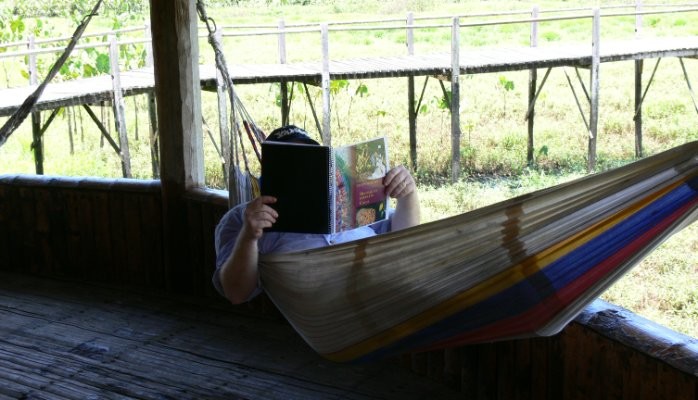
Part 2: What Bean-to-Bar, Craft, and Artisan Mean
In Part 1 in my series What Bean-toBar, Craft, and Artisan Mean, posted yesterday, I suggested definitions for bean-to-bar and tree/farm-to-bar in order to spark discussion. I am happy to report that it did ... on Facebook!
To sum up one of my main points in Part 1, one of the challenges I have with existing definitions is that they conflate two or more concepts (e.g., around process with quality or intent) entwining ideas in circuitous, sometimes Byzantine twists. A definition is too complex, in my opinion, if it tries to embrace more than one idea and require qualifying exclusionary clauses.
Here in Part 2 I present definitions Craft and Artisan with the same thinking in mind.
What it Means to be a Craft Chocolate Maker
This is a definition, in part, by analogy:
The primary concerns of an industrial chocolate maker are consistency: consistent flavor and consistent rheology. This is because the customers of the industrial chocolate maker rely on this consistency in their equipment and in their recipes. Thus, the sourcing and manufacturing practices of the industrial chocolate maker revolve around taking an agricultural product that varies from harvest to harvest – and region to region (and sometimes bag to bag)– and making a finished product that tastes and acts the same, day in and day out,
year in and year out.
Craft chocolate makers, on the other hand, tolerate (if not embrace) a lack of consistency. They look at each batch (literally each batch) or bag or lot of beans as a new creative opportunity—looking to bring out unique flavors, not the same flavors. I think it's important that craft chocolate makers master the crafts of chocolate making, but I am using that concept as the basis for defining Artisan.
Notes:
The focus on consistency is why I consider Valrhona (for example) to be an industrial chocolate maker and not a craft chocolate maker—couvertures are industrial products and Valrhona molds its couvertures into its retail bars; it does not make different chocolates for its retail bars. A chocolate maker can be both industrial and craft with different product lines.
What it Means to be an Artisan Chocolate Maker
The meaning of artisan originally encompassed the idea of being trained under a master – apprenticing – in order to master necessary skills.
To be considered to be an artisan chocolate maker, I propose, a chocolate maker must either:
A) Have apprenticed or attended an accredited educational program in chocolate making for a minimum of two years and produced chocolate on their own for a minimum of three years (that satisfies the 10,000 hour rule), or some combination thereof:
AND
B) Be able to demonstrate that they can take 1MT of cocoa beans and produce 1MT of chocolate that is recognizably the same from start to finish.
Notes:
One of the most important aspects of apprenticeship is direct mentorship under an acknowledged, accomplished, practitioner. When the apprenticeship is completed successfully, customers can assume that they are securing the services of someone who is technically competent. It does not mean that the artisan is creative any way; it means the artisan knows what they are doing.
I think that it’s easy to identify many artisan chocolate makers, but for many arriving at consensus is much harder. There are no accredited formal training or apprenticeship programs in chocolate making, so there is no way for someone to know, by looking at a diploma, if a particular chocolate maker actually qualifies as an artisan.
That’s the reason for the test.
I have no idea who would administer such a test (which would not nearly as intensive as the French MOF, obviously, but it’s in that vein), or who would pay for it or how it would be managed. But re-connecting the concept of artisan with study, hard work, and technical mastery makes sense to me and, importantly, there is no overlap with my definitions for either bean-to-bar or craft.
In Part 3 I propose definitions for chocolatier, batch size, and single-origin.
Note:
The listing image is of me in Ecuador in 2005 during the University of Chocolate organized by Pierrick Chouard of Vintage Plantations. I am relaxing in a hammock with the study guide for the course. Kapawi Lodge is in the southeastern part of Ecuador, a short motorized canoe ride from the Rio Pastaza which forms the border with Peru. On that trip were Shawn Askinosie (the founder of Askinosie Chocolate), the founders of Choctal ice cream (Marc Boatwright and Patricia Hinajosa), Steve Lawrence (who works in chocolate in Austin, TX), and Martin Jorgenson, who now manufactures licorice (lakrits) in Scandinavia; among other students.
Master-Chocolatier/Confectioner & Pastry Chef. Product Development and Innovation.
8yVery good points regarding the apprenticeship too....how many times have I read that so-and-so 'apprenticed ' with Mr Great Chef...the reality being that working for free somewhere for 2 weeks and then attending a couple of beginners chocolate courses at ( insert well known industrial manufacturers name ) does not an apprenticeship make.
Marketing Manager at PhilaPort (The Port of Philadelphia)
8yThe Port of Philadelphia is a major port of call for imported Cocoa beans in the U.S.
Chocolate Blogger
8yThank you so much Clay for the clarification! With the example of Mast Brothers I totally understood what you meant. Wow, these definitions are the answers that everybody has been looking for for such a long time. Are you sure you don't want to come up with another book? That'd be so cool...
TheChocolateLife – Independent Journalist, Consultant, Motivational Speaker, #CocoaOtaku
8ySharon - by point B do you mean the test?